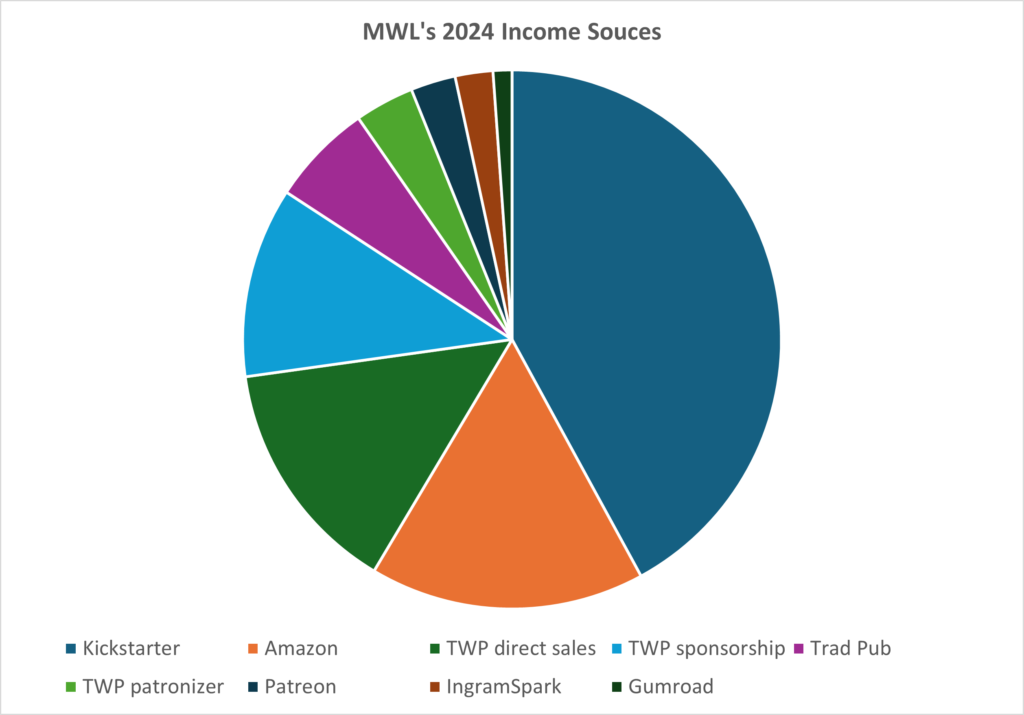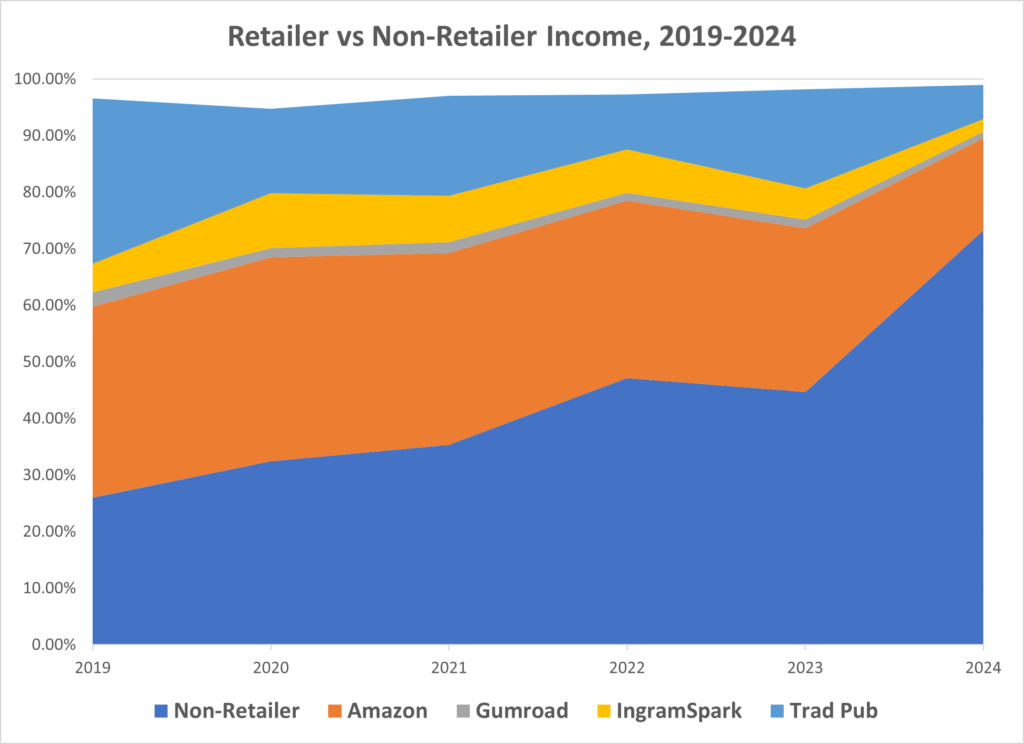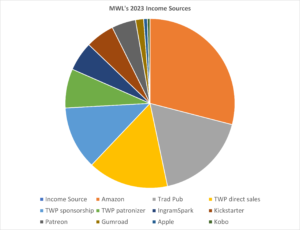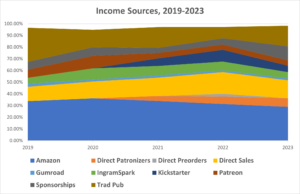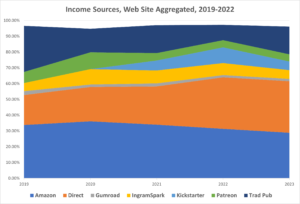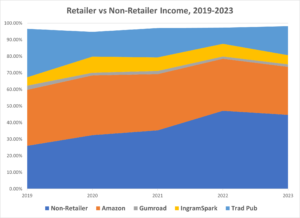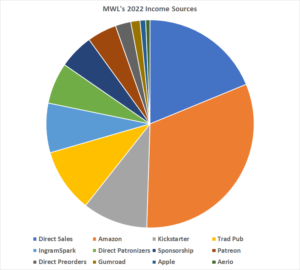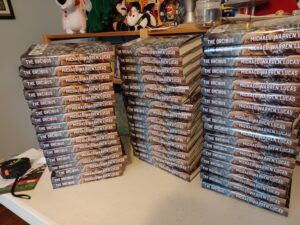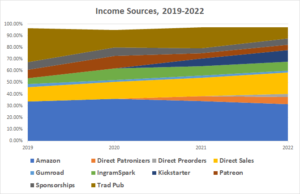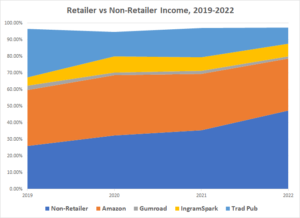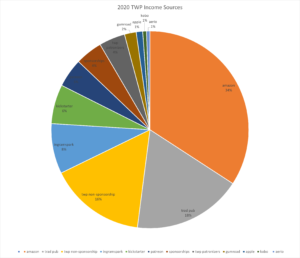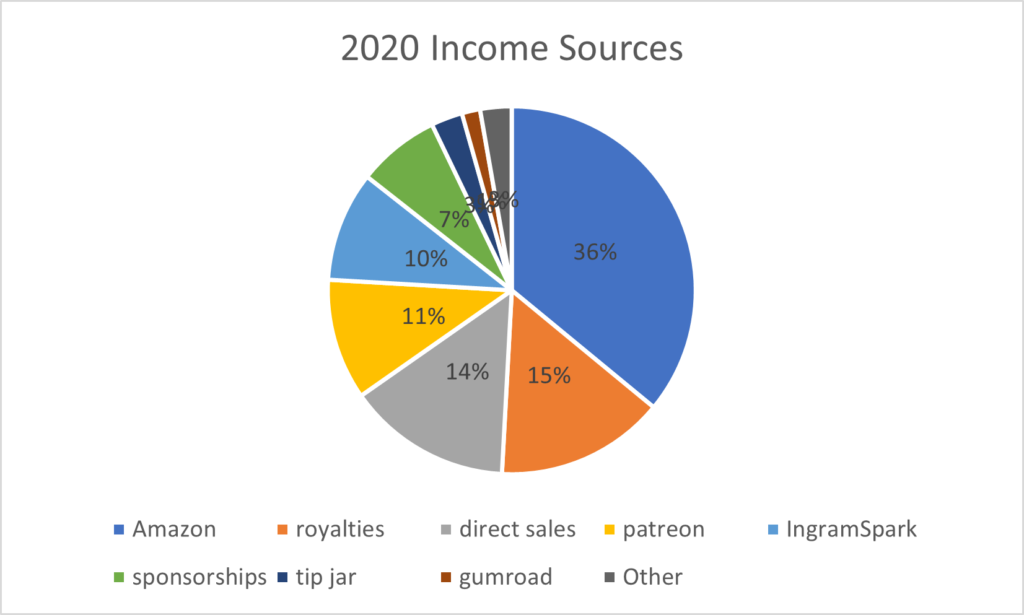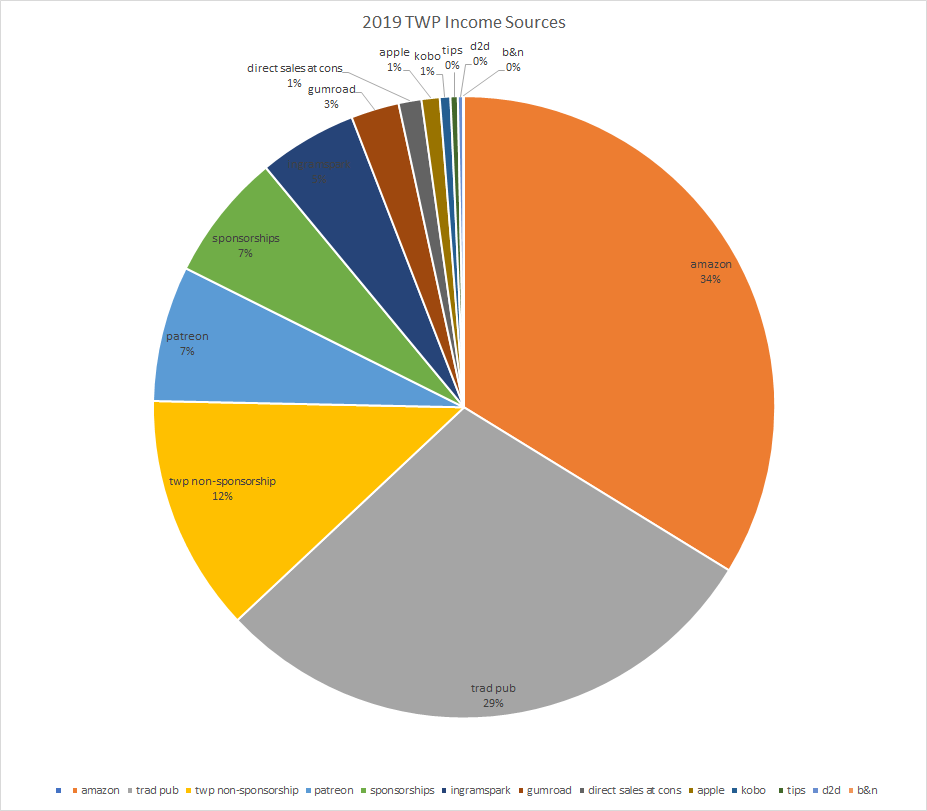How do I make a living at this silly business? By gathering money through every available channel. For the last few years I’ve posted where the money comes from.
First, the usual boilerplate. I’m a writer. My income comes from writing books and making them available. I publish both independently and through publishers. I don’t consult. I don’t seek out speaking fees. I desire to make my living as an author, creating and licensing intellectual property. I make my books available in every channel that offers reasonable terms.
Whenever I share actual dollar figures, people inform me that I can’t possibly be making that much, or that I don’t deserve to make that much, or demand I share “the secret.” The first two are not worth my time, and I’ve been trying to tell everyone the dang secret for years: keep writing with an attitude of deliberate practice and manage your cashflow. Nothing productive comes from such discussions, so I don’t share those numbers.
The numbers this year are weird because the Run Your Own Mail Server Kickstarter went viral. When you express values year-over-year as percentages and one of the values decides to bloat, everything else skews. How weird? Well, here’s 2024.
Here’s the detail.
Kickstarter – 41.63%
Amazon – 16.34%
TWP direct sales – 14.09%
TWP sponsorship – 11.30%
Trad Pub – 6.07%
TWP patronizer – 3.53%
Patreon – 2.67%
IngramSpark – 2.25%
Gumroad – 1.12%
What about Apple, Kobo, Google, and so on? The mighty Barnes & Noble? All under one percent. Don’t get me wrong, I’ll take the cash, but at that level the sale of a single book can shift a retailer’s ranking.
What conclusions can I draw from this?
First, disintermediation works. Eliminating rent-seeking middlemen is a viable path. Yes, Kickstarter is a middleman. They are a much less intrusive middleman than Amazon, however.
If you just look at the percentages, however, you might think that I’ve replaced a dependency on Amazon with a dependency on Kickstarter. Kickstarter backers are much closer to the bottom of the Reader Acquisition Funnel than Amazon customers, however. Those readers are highly willing to back authors they like, and they prefer to do so as directly as possible. Most of my Kickstarter backers are happy to sign up for my mailing list and even sponsor future books.
That’s a strong statement, but consider this. The print sponsorships for Run Your Own Mail Server were open for a year. I got 148 epub sponsors and 89 print sponsors in that year, and was delighted. That book advanced to Kickstarter, and I was thrilled. Happy RYOMS backers signed up for my sponsors mailing list.
The sponsorships for the next book opened 12 October 2024. Since then, it’s picked up 70 epub sponsors and 113 print sponsors. Many of those sponsors came from the RYOMS Kickstarter.
Lure people into a direct relationship with you. Offer special bait to suck them in. It works. Remember that you want happy readers who come back over and over again: be a rose, not a pitcher plant!
But what about Amazon? What about discoverability?
Amazon is just a discovery platform, like Apple Books and Kickstarter and everything else. The most recent tech books are available in print from Amazon, but not in their Kindle store. You can buy Kindle-compatible versions in many places, but not on Amazon. Again, I don’t hate Amazon. I don’t love them, either. They’re just another retailer offering yet another nonnegotiable deal, and for my tech books I must refuse their Kindle store deal.
So, are there long-term trends? I ran the numbers to compare my above-1% retailers to my non-retail channels. For what it’s worth, I graphed them.
That huge blue block that dominated everything this year? That’s driven by the viral Kickstarter. A sudden surge in one channel throws off the so-called trends.
Each year, more people buy more directly. Treating retailers as discovery channels works.
The question is, can I replicate RYOMS’ crowdfunding success? The real test will be when the new Networking for Systems Administrators advances to Kickstarter. But I’ve already promised people disappointment for another Kickstarter and 81 people have signed up for it, so I’m inclined to say that initial signs are good. (Once I launch that they’ll run screaming, of course, but at the moment it looks promising!)
I should also say: I neither love nor hate Kickstarter. I’m fond of them at the moment, sure, but that’s because it worked. If it keeps working, I will remain fond of it. If it stops working, I move on.
But now, it’s time for me to turn the actual numbers into a tax return. Wish me luck. I’m gonna need it.

